The Roseate Spoonbill (Platalea ajaja) is one of the most striking birds in Florida wetlands. Being relatively large avians, standing nearly three feet tall and with a four-foot wingspan, these brightly colored birds are not difficult to spot.
Most of this ease is due to their brilliant pink plumage. The only other bird in North America that rivals this blushing bird is the American Flamingo (Phoenicopterus ruber), which is exceedingly rare and only occasionally spotted in the deepest corners of the Everglades. However, these birds share a remarkable similarity in how they get their pink color from their food.
Roseate Spoonbills gain their pink plumage through the crustaceans and invertebrates they consume. This prey contains high concentrations of carotenoids, leading to these unusual birds’ astonishing aspect.
The process of how these tiny animals turn into the genesis of radiant pink feathers is rather fascinating. So, let’s talk about it!
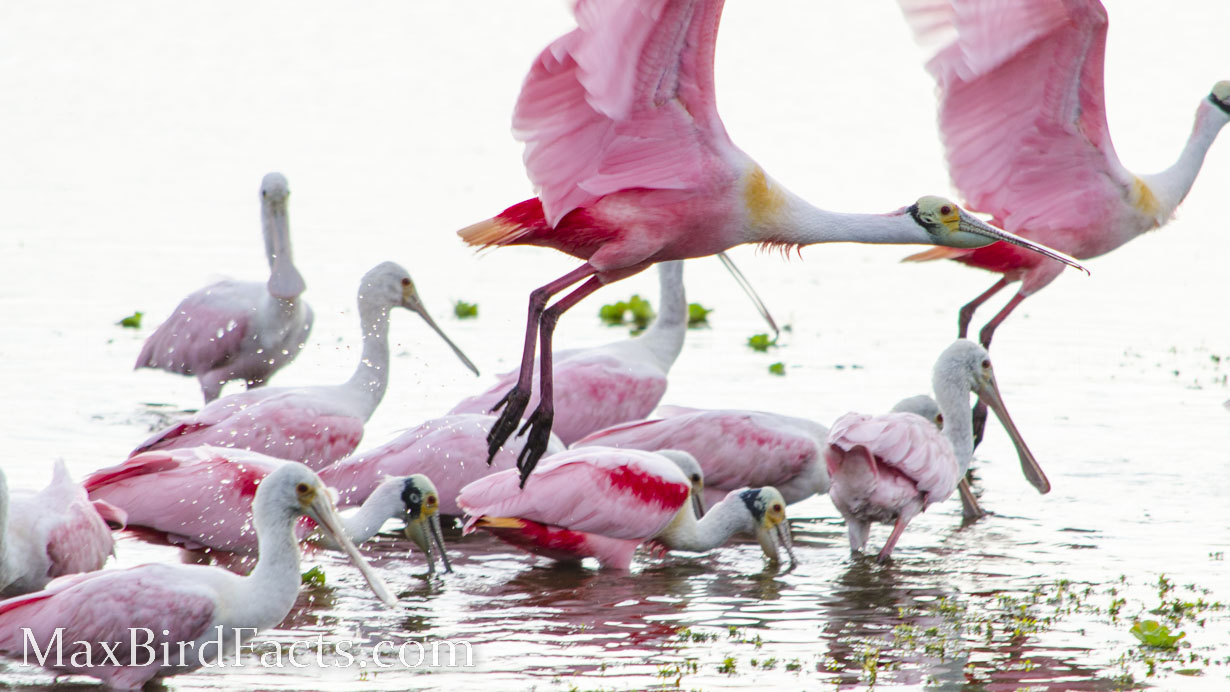
How Do Shrimp Create Pink Feathers?
Pigmentary coloration is the process in which color is formed through the absorption and reflection of specific light waves. The final color that reaches our eyes is the wavelength of light that is not absorbed by that particular surface, also called subtractive coloration.
For example, if all the light is reflected off a surface, you would receive the color white. However, if a surface absorbs all the light, you would get the color black.
I know that might sound like a lot, but you deal with pigmentary and subtractive coloration daily.
Color printers function entirely on subtractive coloration, utilizing four colors of ink: black, cyan, magenta, and yellow. To correctly print an image, the printer continuously calculates how much of each color to use. Once the image is printed onto paper, each of these four colors will control which wavelengths of light are absorbed and which are reflected, resulting in the final colored image we see.
Now that we’ve got a basic understanding of some color theory, let’s get back to the birds.
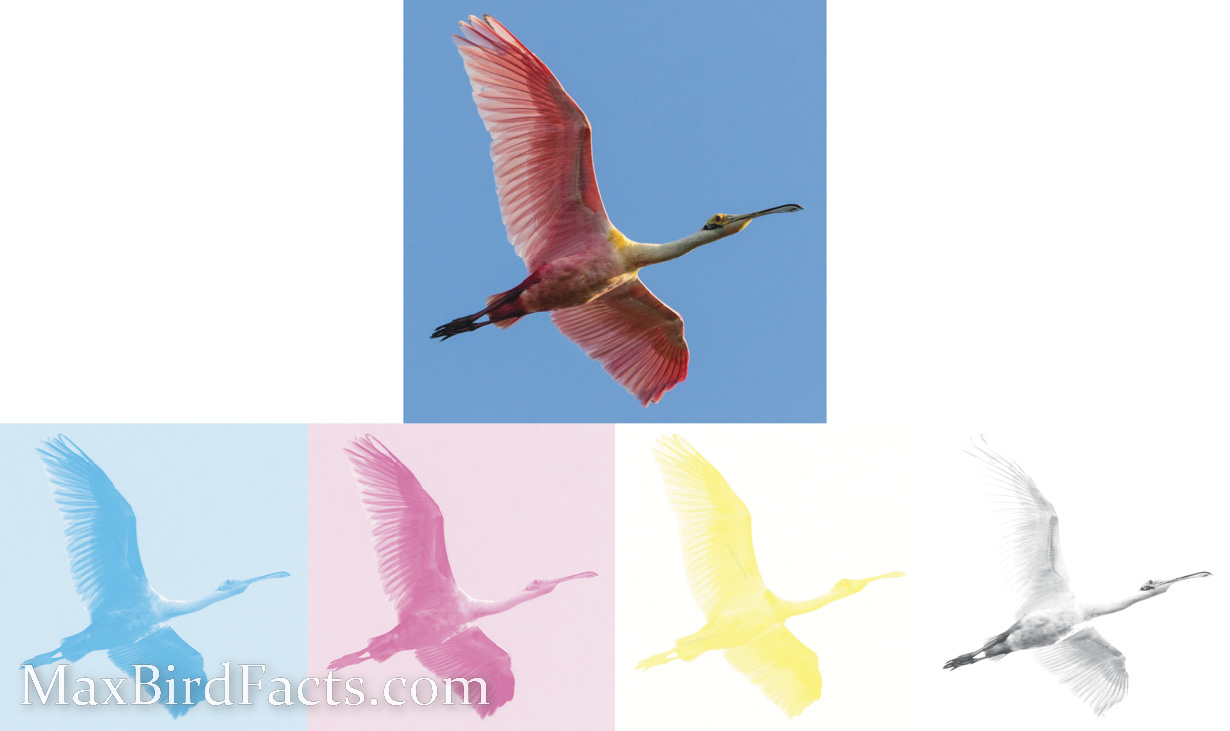
Roseate Spoonbills primarily prey on tiny crustaceans and other invertebrates in the shallow marshlands they call home. This otherwise untapped food source was enough to make spoonbills what we know them to be today.
Over millions of years, spoonbills diverged from ibises in their appearance and feeding behaviors. Ibis are superb probing birds, sticking their sickle-shaped bills deep into the soil for burrowing invertebrates. However, this fine-pointed bill was impractical for infinitesimal items in murky water. So, over countless generations of natural selection, a broad, nerve-rich, spoon-shaped bill was derived to help these birds find their prey easier.
The spoonbill’s “hunting” style also reflects this beak’s strengths. Slowly wading through the water, these birds will move their head side to side with the bill submerged and slightly agape. Once the bird senses something touching the edge or inside the bill, it greedily snaps it up.
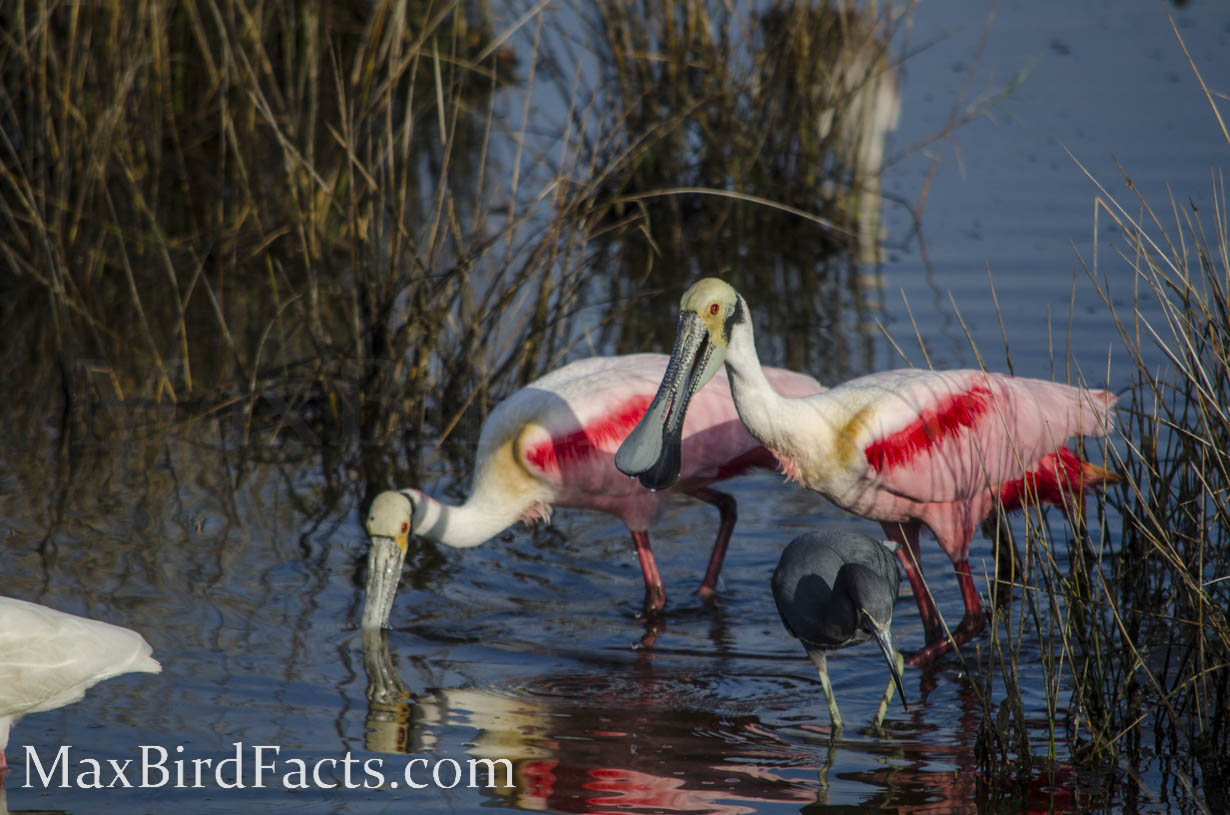
Think of someone using a metal detector at the beach. That person will amble while waving the device back and forth above the sand in slow, broad sweeps. Once the metal detector senses an object of interest, it will alert the user, and that item can be dug up.
The nerve endings and clusters at the bulbous end of the spoonbill’s bill act like the metal detector’s sensors. But, instead of pocket change and wedding rings, the spoonbill is looking for its lunch.
With all this background in mind, how are these crustaceans the key to their pink coloration? And, wouldn’t such a minuscule meal be a waste of time anyways?
Crustaceans are packed with carotenoids, fat-soluble pigments that makeup reds, oranges, and yellows. Invertebrates compile these pigments by eating aquatic vegetation, which uses beta-carotenoids to conduct photosynthesis. Then, as spoonbills snap up these crustaceans, they ingest their stockpiled carotenoids.
As the birds digest their prey, these pigments are transferred into fat stores under the skin. These reserves feed into the feathers, primarily along the bird’s arms and rump. Different concentrations of carotenoids and types of pigments, specifically canthaxanthin and astaxanthin, will result in various shades of pink, red, orange, and yellow throughout the spoonbill’s plumage.
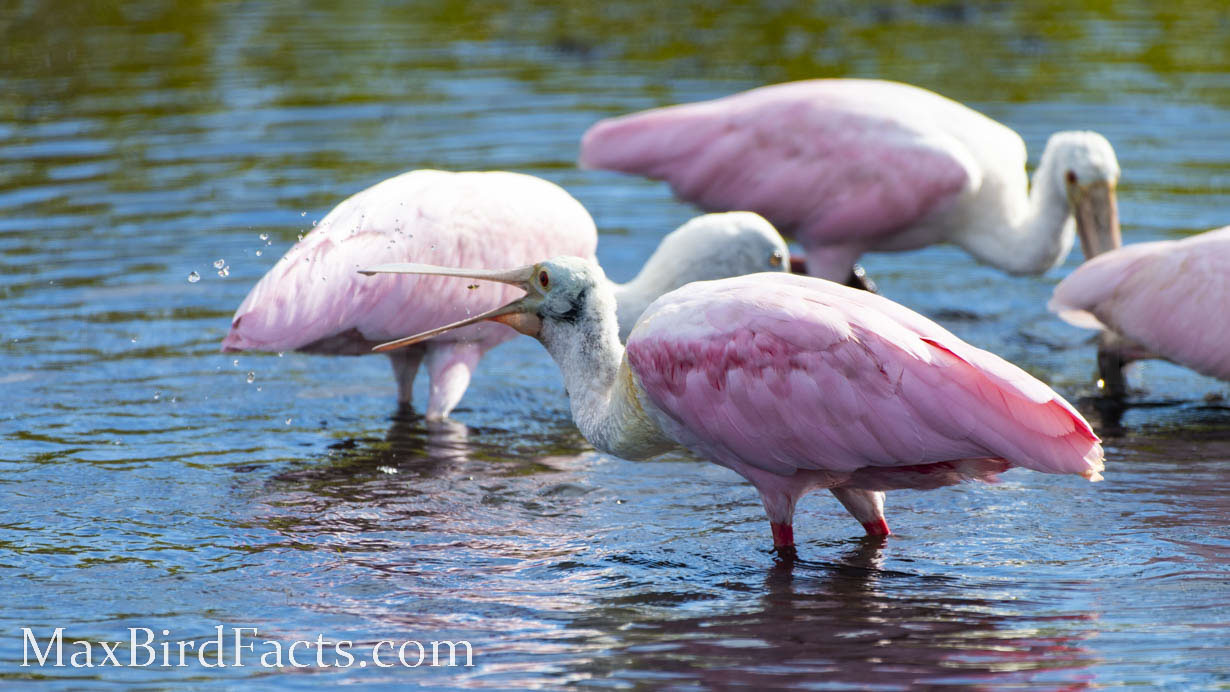
And, as far as these minuscule meals being a waste of time, hunting for tiny crustaceans is much more efficient than you’d think.
Imagine the amount of energy a hawk has to burn to chase down a rabbit through a field. Compare this to a spoonbill slowly walking through a mangrove swamp, lazily swaying its head and seizing prey as it comes.
Since the spoonbill’s quarry is so tiny, the amount of effort to capture it must be minimal, and it very much is. This manner of feeding is exceptionally cost-effective, where the most energy is spent walking and swallowing the food itself.
Going back to the beginning of this section, the red-orange wavelength of light (580-650 nm) mixes with a dark blue-violet wavelength (380-495 nm) and is reflected off the feathers to produce what we call pink. This is a classic view of subtractive coloration, where all but the desired colors are absorbed by the surface.
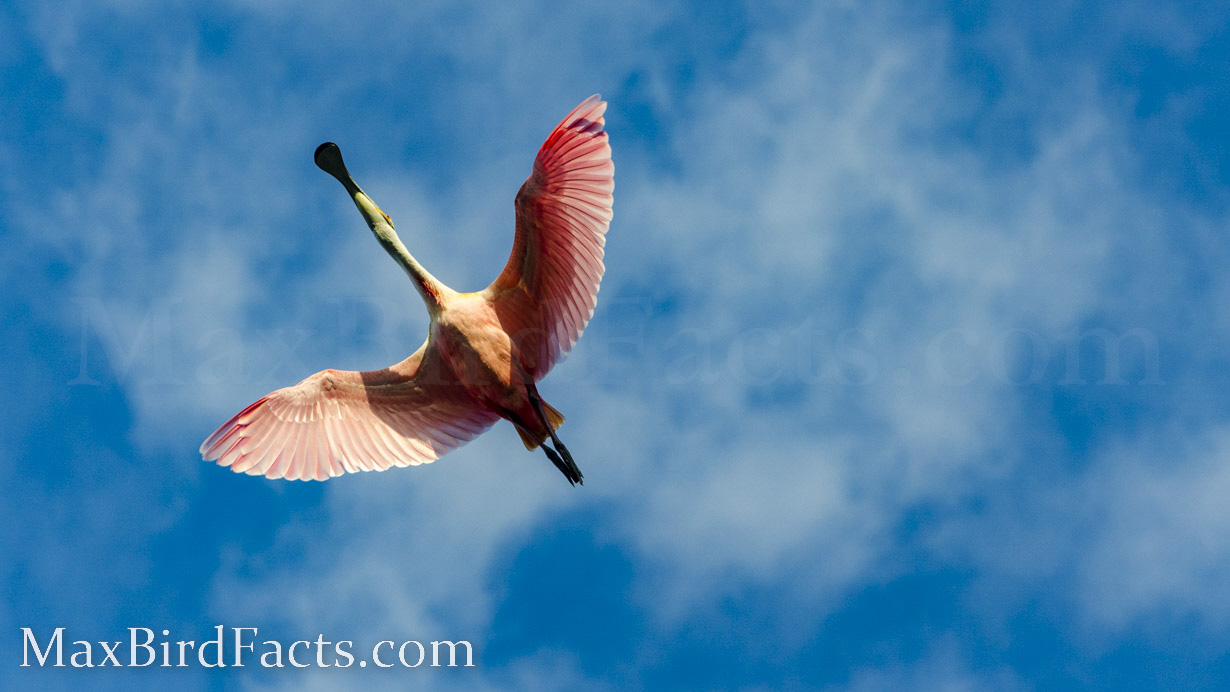
I think it is also vital to understand how the color makes its way from the feather to our eye in the way we perceive it. Different birds use different coloration strategies to work within their lifestyles, and spoonbills have chosen one of my personal favorites. The pink that we are so fond of in Roseate Spoonbills and American Flamingos simply wouldn’t be possible if it weren’t for these seemingly insignificant crustaceans.
I actually talk a lot about pigmentary coloration and carotenoids in my article Why Are Flamingos Pink – How a Bird’s Diet Affects its Feathers. I’ve also discussed structural coloration in Why Are Flamingos Blue – When That’s Impossible. If you’d like to check out either of those, please click on the blue text, and you’ll be brought directly to them.
But, now that we know HOW are Roseate Spoonbills are pink, let’s find out the reasons WHY are Roseate Spoonbills are pink.
So, Why Are Roseate Spoonbills Pink?
Juvenile Roseate Spoonbills are much more plain compared to their adult counterparts. These young birds can easily be mistaken for a White Ibis at first glance by displaying a fully white-feathered head, neck, breast, shoulders, dull orange-brown eyes, and very pale pink wing and body feathers.
Adult spoonbills, in contrast, will sport a bare pale-green head bordered with black around the ears, blood-red eyes, white neck and breast feathers, bright wings, body and rump, and radiant magenta wing and tail coverts. The adult’s beak is also ordained with dark ridges and bumps rather than the smooth surface of the juvenile’s bill.
Young spoonbills will graduate to their full adult plumage a few months before their third birthday, roughly 33 months old. This changing of garb coincides perfectly with the upcoming spring migration and nesting season soon after.

The importance of these plumages is to give other spoonbills a clear indicator of when a bird is old enough to breed. The flamboyant coloration these birds have been dealt with also comes with another factor, honest signaling.
An honest signal is one which the animal cannot hide or falsify. An excellent example of an honest signal is the quality and state of their plumage and aspect, specifically, when their aspect is based on a color they cannot produce. Colors stemming from carotenoids aren’t something birds can synthesize, so they must come from the food they eat. In some species, this only makes up a small part of their display, whereas it is nearly the entire color spectrum of other species.
Roseate Spoonbills require a constant source of high-quality, carotenoid-rich prey to maintain a healthy appearance. If a bird cannot find a steady source of carotenoids, its feathers will appear much duller than its rivals. This boring aspect will signal to other birds and potential mates that this particular bird isn’t good at finding food and, therefore, might be unable to provide for its offspring.
However, if a spoonbill is successful at finding an exceptional area to forage, it will also be more successful at finding a mate. This selective pressure ultimately caused spoonbills to go down the evolutionary path they are traveling now. The need for showy, outlandish displays of vivacious color is perpetuated by the knowledge that this desired effect comes with the certification of a successful partner. And this is how honest signals work.
The fluorescent pink of the Roseate Spoonbill also makes their nest colonies easy to spot. Not only is this a pleasure for birders and photographers, but it helps to show where members of their same species are.
Herons, egrets, ibis, and spoonbills are well known to make mixed colonies of raucous tenants. Still, I’ve usually seen species tend to stay nearer their relatives in these large communities. Spoonbills will make up a large patch of bright fuschia in an otherwise white mass of boisterous birds, making them easy to spot for more spoonbills to join.
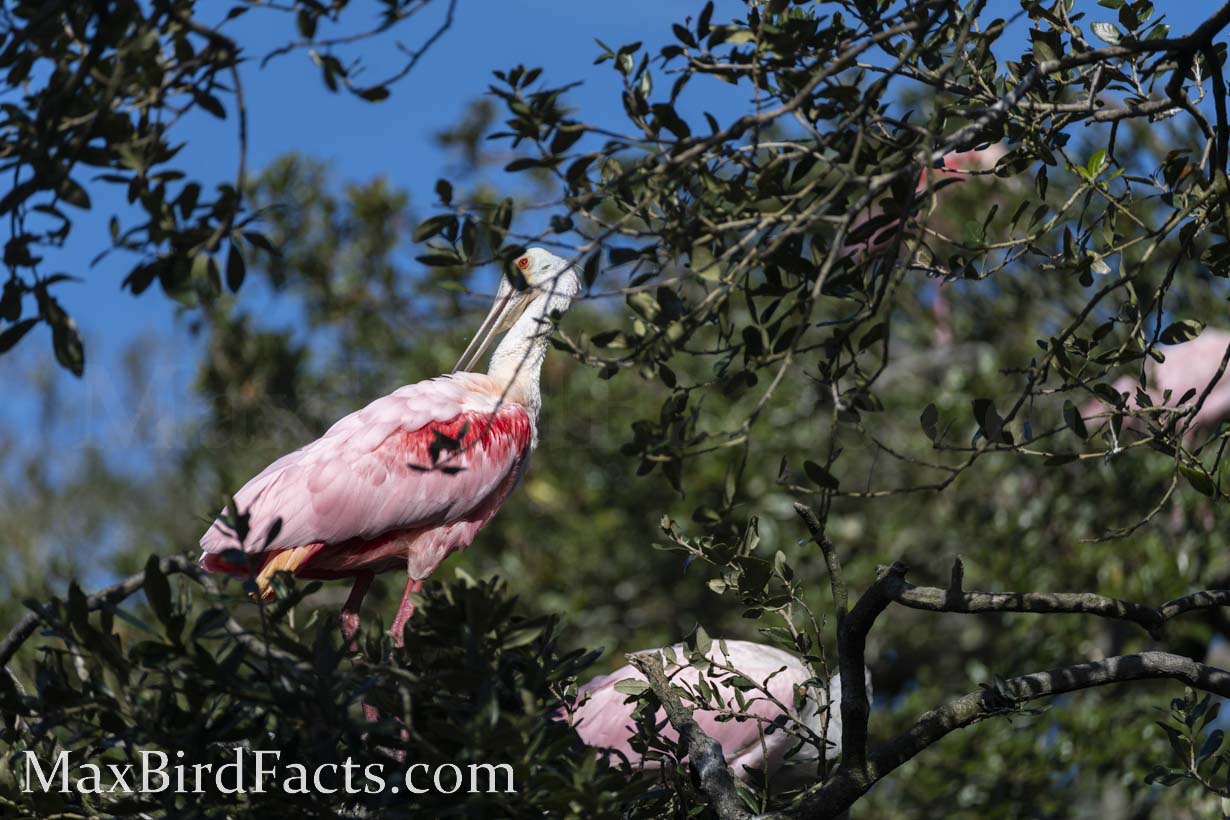
I couldn’t quite find anything to confirm or deny my theory above, but I feel the logic is sound. Why would a brightly colored bird, like a Roseate Spoonbill, form a nest in fairly open trees along with multiple other birds of related species? Yes, there is an apparent answer to safety in numbers. Still, I think they prefer to create their nests around members of their own species.
Imagine this scenario; you walk into a reception hall filled with every kind of person imaginable speaking hundreds of different languages, dialects, and accents and dressed in every conceivable fashion. Then, in one corner, you spot some of your old classmates; some talk a little differently than you remember, but you can still understand what they are saying and feel comfortable with them.
I suspect it would be the same case for the incoming spoonbills, and their bright pink feathers would only help make them more noticeable. Besides, why wouldn’t they want to catch up with some old friends they haven’t seen for the better part of a year?
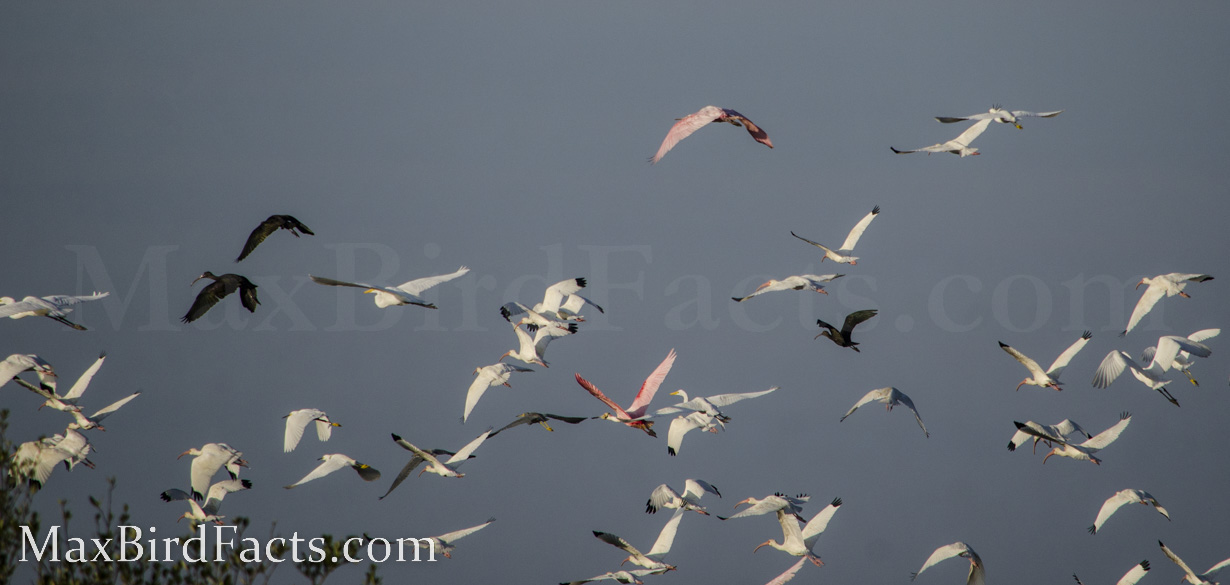
Now We Know Why Are Roseate Spoonbills Pink
Roseate Spoonbills are pink for a multitude of reasons. Their coloration is directly tied to their diet; their aspect’s saturation and quality reflect the bird’s status and health, and it helps them stand out in a crowd.
Spoonbills gain their iconic color from the carotenoids stored in the crustaceans they consume. Their prey builds up carotenoids from the vegetation they eat, which the spoonbills then digest and retain in their fat to color their plumage.
If this food source is insufficient, the bird’s coloration will begin to falter, and it will be less successful at finding a mate. A healthy Roseate Spoonbill will have a vibrant magenta slash along its wing covert and tail. These are tell-tale signs from this bird, saying it is successful in the wild and can potentially pass its traits on to the next generation.
Roseate Spoonbill’s brilliant coloration is also a landing beckon for incoming nesting birds. Massive colonies of spoonbills will roost together on the tops of trees, forming clamorous colonies. Their bright color will let incoming spoonbills where to land so they can reminisce with their friends and relatives.
I think the question as to why Roseate Spoonbills are pink is definitely more complex than “because they eat shrimp,” and I hope you can appreciate that now after reading about their fascinating behaviors and adaptations.
I really hope you enjoyed reading this article as much as I did writing it. If you have ideas or suggestions for topics you would like me to write about in the future, feel free to leave a comment below or shoot me an email!
Get Outside & Happy Birding!!!
Max

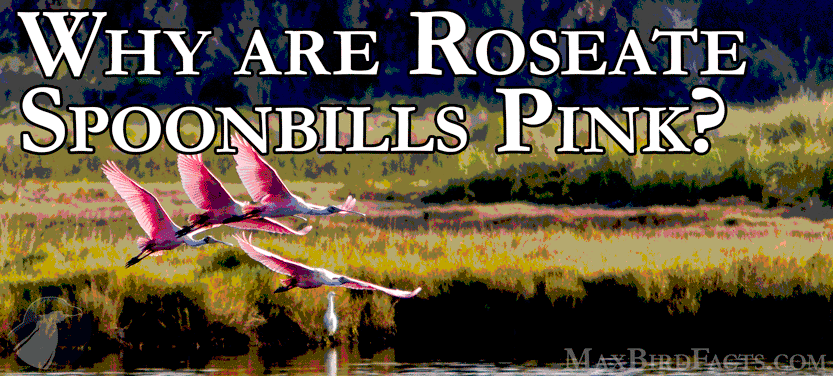
Enjoying reading your articles Max! Also enjoyed our morning at Sawgrass Island.
Thanks Dan!!! I’m really glad you could make it out to Sawgrass and Emeralda for the festival. We’ll have to go birding together again soon!